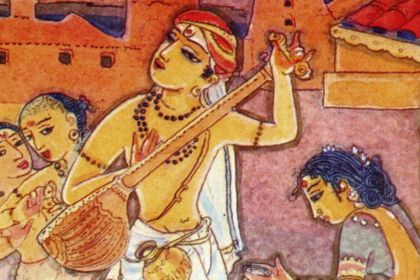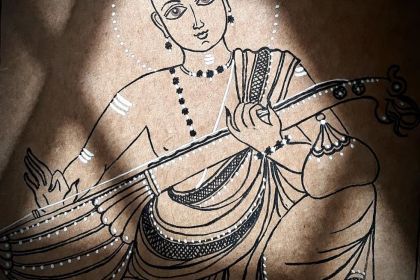SAXOPHONE
Kadri Gopalnath: nadaswaram musician who canonized the Сarnatic saxophone

Kadri Gopalnath CD cover
Music Period: Indian Classical
Country: India
Musical Mode: Ionian Mode
Piece of Music: Vatapi Ganapatim
Kadri Gopalnath was a distinguished South Indian musician who introduced the saxophone into the classical repertoire and drew the world's jazz audience to Carnatic melodic style by performing at European and American festivals. He also enjoyed considerable success with Western classical listeners after his performance at the 1994 BBC Proms at the Royal Albert Hall, becoming the first Carnatic musician to be invited to the event.
Taught from childhood by his father to play the nadaswaram—an oboe-like wind instrument in the South Indian tradition—Kadri Gopalnath became fascinated by the saxophone sound when he first heard it at the Mysore Band show circa 1957. Then, he spent two decades adapting the saxophone design to follow Indian ornamented tunes as well as developing an outstanding performing technique that earned him the recognition of classical gurus.
Although saxophone arrangements of Indian classics had already been penned by Salil Chowdhury and the film-oriented songwriting duo Shankar–Jaikishan, Kadri Gopalnath certainly took the instrument to the next level by conquering the genre of Carnatic sacred songs and improvising Indian melodies in jazz-jam-like jugalbandi sessions.
Listen to Vatapi Ganapatim, a jugalbandi performance by Kadri Gopalnath and Narasimalu Wadvatti:
The jugalbandi genre usually involves two solo musicians repeating and developing each other's improvisations within a melodic standard fixed by the tonal structure of a particular Indian classical raga. In the given example, Kadri Gopalnath and Narasimalu Wadvatti are engaged in musical dialogue on two Western orchestral instruments—saxophone and clarinet—as they improvise upon the motifs of one of the best-known Muthuswami Dikshitar's kriti songs, Vatapi Ganapatim. The track is set in the Hamsadhvani raga of the Carnatic music system with a seven-tone pattern that is identical to the Ionian major scale that dominates Western classical and popular music.



